
Books about the Incas and the spiritual tradition of the high Andes
Please find below a list of English literature dealing with the Religion of the Incas and the Inca Empire. Should you know a book or any other piece of literature that is not provided here just send me a quick message.
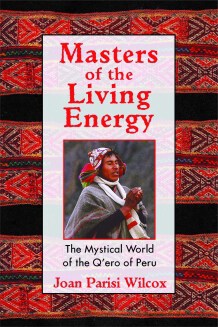
Masters of the Living Energy
Known as the "keepers of the ancient knowledge" the Q'ero Indians of Peru are the most respected mystics of the south-central Andes. In 1996 Joan Parisi Wilcox travelled to the Andes and was able to record the mysteries of the Kawsay Pacha, the multidimensional world of living energy, through more than 40 hours of intensive interviews with six Q'ero paqos, masters of the ancient spiritual traditions of Peru.
The Q'ero are known for having preserved the Inca spiritual tradition more precisely than any other indigenous population of the Andes. The in-depth interviews presented in this book recount the direct words of these masters so readers can discover for themselves the mind and heart space of these people.
Four new chapters of this revised edition focus on the work of the mesa, the Andean form of a spiritual medicine bundle, and it's use as a conduit for the healing energies of nature. The mesa is called the "heart's fire" because it represents the finest energy - the energy of compassion - that a paqo cultivates while walking the sacred path.
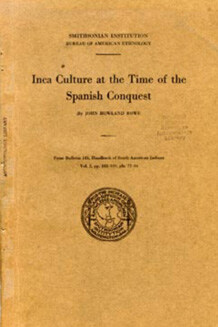
Inca Culture at the time of the Spanish conquest
Anthropologist John Holland Rowe published in the 1950s one the most remarkable and important books about the Incas and the Inca spirituality. It is now available FOR FREE on the University of Berkeley's website.
From the introduction of the book:
This section of the handbook deals with the culture of the Andean region between Ecuador and the northern border of Aymara territory as it was observed by the Spanish conquerors in the 16th century and recorded in surviving documents. This area includes the whole of the desert Coast of Peru and the broken valleys of the Peruvian Highlands, a region which was the home of many different tribes, nations, languages, and cultures before it was superficially unified by its incorporation into the Inca Empire
With minor exceptions, however, the whole of the literature now available which deals with this part of the Andean area refers to Inca culture in the region around Cuzco, so that it is only for the Inca that a complete cultural description is possible. The account that follows, therefore, is specifically an ethnographical description of the Inca culture, although differences in other parts of the area are indicated whenhe limitations of the source material permit.
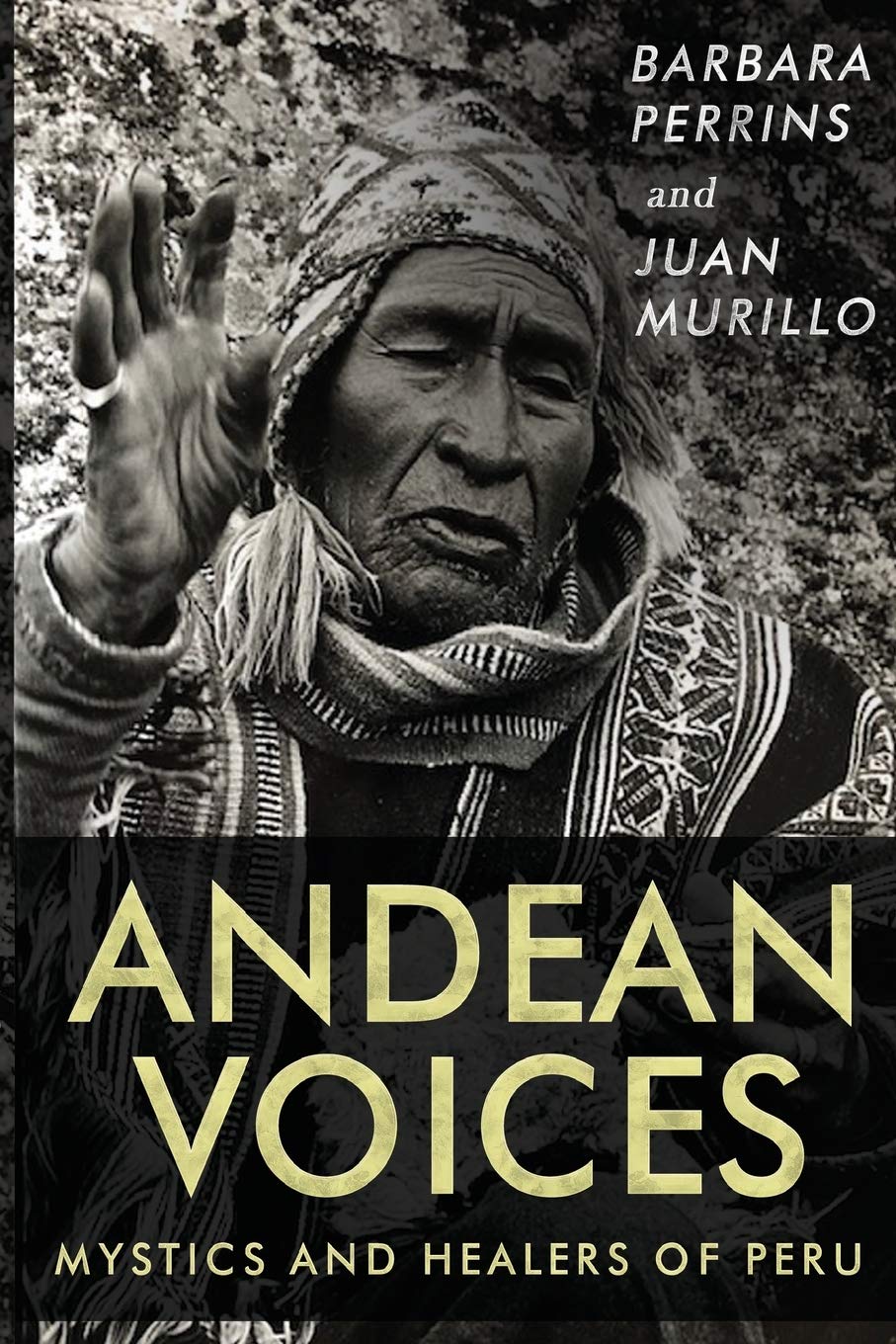
Andean Voices: Mystics and Healers of Peru
This book talks about Juan Murillo's and Barbara Perrins' personal experiences, the history of the native Andean mountain people and the extraordinary powers of the Q'ero Nation's teachers.
Juan and Barbara tell the stories of those they met on their journey, several of whom became their close friends. Each writer relays what they observed and learned, witnesses to the indigenous teachers, their families
and communities.
This is the story of a Peruvian man and an American woman who spent 20 years walking through the Peruvian Andes, meeting and listening to the modern descendants of the famous Inca civilization.
Their wisdom and teachings inform the authors’ lives today.
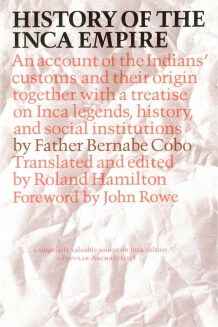
History of the Inca Empire
The "Historia del Nuevo Mundo", set down by Father Bernabe Cobo during the first half of the seventeenth century, represents a singulary valuable source on Inca culture. It contains a foreword by John Holland Rowe, author of Inca culture at the time of the Spanish conquest.
Working directly from the original document, Roland Hamilton has translated that part of Cobo's massive manuscripts that focuses on the history of the kingdom of Peru. The volume includes a general account of the aspect, character, and dress of the Indians as well as a superb treatise on the Incastheir legends, history, and social institutions.
American antiquity writes about this book: While Cobo's Historia is not a pristine account, it is hard to imagine what our knowledge of Andean societies would be without it. Four hundred years after Cobo landed in Lima, Roland Hamilton should be congratulated on his translations of the Historia del Nuevo Mundo, which remains a monument to the breadth of vision and intellectual energy of its author.
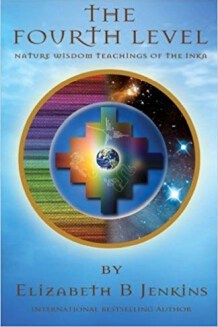
The Fourth Level
You could call the latest book of Elizabeth Jenkins an aggregation of her 25 years of experience with and exploration of the Spiritual Tradition of the Andes.
In this primer she shows how humans can develop and increase their Nature Intelligence as she carefully translates the cosmovision of the Q'ero Indians of Peru. By using the seven basic Energy Principles she reveals how we all are connected to nature.
Available as paperback or Kindle e-book (also works with iPad and others, use free app)
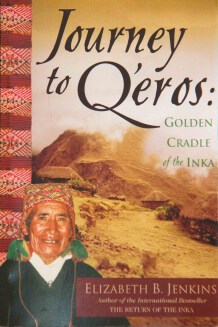
Journey to Q'eros Golden Cradle of the Inka
Jenkins continues the rivetting true-life account of her initiation into the Andean Mystical Tradition as she leads a group of initiates to where the High Andes meet the Amazon jungle.
Here at 15,000 feet, in the tiny isolated villages of Q'eros, the group is tested to the limit as they encounter their deepest fears and greatest hopes on their way to meet the living descendants of the Inkas. In the ancient Inka village of Choa Choa they pass their first test and meet Don Manuel Q'espi, High Priest of Q'eros.
Available as paperback or Kindle e-book (also works with iPad and others, use free app
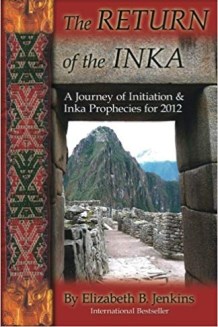
Return of the Inka
Elizabeth Jenkins' first book takes you on a magical true-life adventure to discover the lost spiritual secrets of the Inkas and their Prophecies for 2012. She first travels to Peru in 1988, where she discovers a land so compelling and a mysterious inner calling so profound that she quits many things in her life and moves to Cuzco. Constantly battling her rational mind to follow her spiritual impulses, she is led to an 'other worldly' encounter with an Inka mountain deity. T
his sets her on a path of unprecedented adventure into the mysteries and shadows of the High Andes, when she becomes the only white woman in a group of Native Andeans to be initiated by an Andean Priest. Finally, persevering through hair-raising challenges and spiritual obstacles she is able arrive to a higher level of Inka Wisdom, receive the Inka's Great Initiation of Hatun Karpay and discover their surprising Prophecies.
Available as paperback or Kindle e-book (also works with iPad and others, use free app)
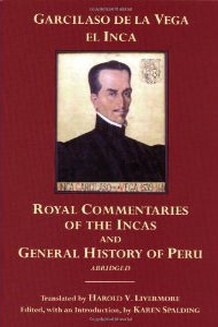
Royal Commentaries of the Incas and General History of Peru
Garcilaso de la Vega Inka was born in Peru in 1539, the son of an Inka princess and a Spanish conquistador. He was a convert to Catholizism, leaving his native Peru for good at the age of twenty-one. But before leaving he took copious notes, listening to all the members of his mother's family, visiting the Indian villages, investigating the minutest aspects of the decaying Empire.
At the age of 69 he had published the first part of the Royal Commentaries, recalling the land of his birth and the glory of Peru. Once he began to write, he never stopped until his death in 1616.
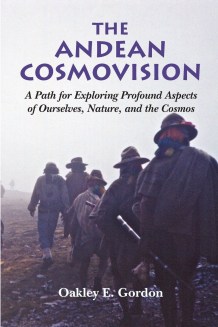
The Andean Cosmovision: A Path for Exploring Profound Aspects of Ourselves, Nature, and the Cosmos
The Andean Cosmovision is a way of perceiving and interacting with reality that has its roots in the traditional, indigenous culture of the high Andes. It is fundamentally different than the Western worldview. This Cosmovision is not a set of concepts or beliefs. It cannot be described or encompassed by words. It can, however, be experienced and it can be explored. This is a guidebook for exploring the Andean Cosmovision.
Oakley Gordon makes his living as a professor of psychology. Since 1994 he has been studying the Andean Cosmovision held by the indigenous people of the high Andes under the tutelage of his Peruvian mentor and friend, Don Américo Yábar. In his trips to Peru he has also had the opportunity to work with many other Andean paqos and healers.
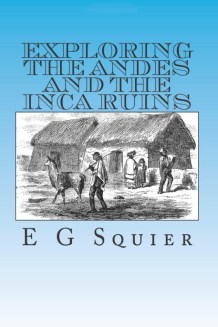
Exploring the Andes and the Inca Ruins
In 1863 archeologist and newspaper editor E G Squier was appointed United States Commissioner to Peru . In that capacity he traveled extensively in the mountains of Bolivia and Peru, making the arduous journey across the Andes on the back of a mule. In his travels he took extensive notes and photographs of the Inca monuments then extant.
This collection is a series that appeared in 1868, which describes his trip and some of the monuments that the Incas left behind.
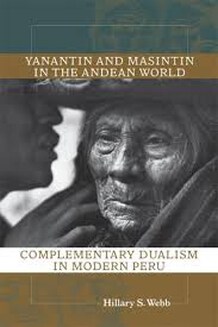
Yanantin and Masintin in the Andean World: Complementary Dualism in Modern Peru
The scholarly and personal odyssey of Dr. Hillary S. Webb, whose study of the indigenous Andean concept of yanantin or "complementary opposites" through the use of the mescaline cactus huachuma led to a personal and professional transformation.
From the book:
Chapter Two
Mind And Body; Spirit And Flesh
I told Amado and Juan Luis about the strange reaction I seemed to get whenever I asked people about yanantin. They exchanged knowing looks. Juan Luis started to giggle and, then, trying to be polite, lowered his eyes and took a long drag of his ponche through the straw. “Not everyone here knows about yanantin, Princesa,” Amado said, “It is something that we were told to forget when colonization came in. We could not speak of it openly because, as you’ve heard, yana also means ‘black,’ and because of that, it was considered something dark. The Spanish saw it as the work of the Devil, and therefore we were taught not speak about it. That was part of the process of being disconnected from this philosophy.”
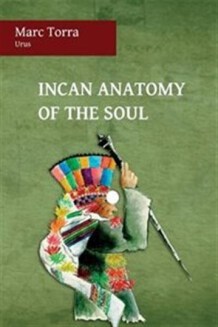
Incan Anatomy of the Soul
Knowledge about the anatomy of the soul became part of various esoteric traditions around 5,000 years ago when entering the age of materialism. But it was kept private among a few initiates. In the Himalayas this knowledge was from master to student only orally and recorded in texts like the Puranas or the Tantras.
In ancient Egypt and Sumer, it was transmitted through various mystical schools which often became Sufi brotherhoods when the Islam arrived. Because of its power various secret societies were founded in the West, keeping this revelations only for a few initiates and primarily limited to a small group.
However, this was not the case in the Andes.
As this book reveals, the Inca civilisation conveyed such knowledge openly. It was communicated in their myths and legends, in their urban planning, ceremonies and festivals, dances, symbols and emblems, and in the language. It was "written" for everyone to "read" because by definition in a culture without formal writing system there cannot be illiterate people.
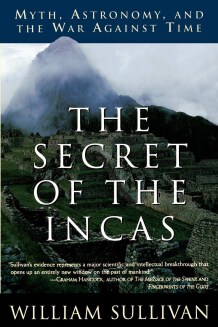
The Secret of the Incas: Myth, Astronomy, and the War Against Time
Sullivan, a scholar of Native American cultures, begins with a question that has perplexed historians of the Spanish conquest: How could the vast Inca Empire, with its millions of subjects, have been conquered overnight by a band of 170 Spanish adventurers? Sullivan digs into the history and mythology of Andean civilization to find what he feels is the answer: For hundreds of years the sages of the Andes had believed that astronomical transitions presaged earthly cataclysms; reading changes in the night skies in the 1400s, Incan priest-astronomers foretold the imminent destruction of their own recently founded empire. Sullivan argues, in a sometimes hyperbolic first-person account (``In that moment I had, I believed, touched for an instant the terrible burden and tragic urgency of the Inca vision''), that the Incas followed the planets, recorded precessional events in their myths, and equated social and celestial changes. He further asserts that elements in Incan culture preceding Pizarro's arrival--constant warfare and the Incan ritual of human sacrifice--represented an attempt to halt the march of time and prevent the apocalyptic events foreshadowed by changes in the night sky. The Incas assumed that the arrival of Pizarro represented the culmination of the prophecy and the failure of their own efforts to prevent its occurrence.
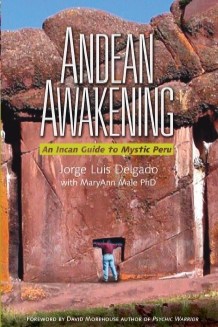
Andean Awakening: An Incan Guide to Mystical Peru
It is an extraordinary time to be alive, as a long-foretold alignment of the Earth with the axis of the Milky Way galaxy announces a new dawn. In Peru, descendants of the Inca call this time the Pachakuti, 'the return of the light' after 500 years of darkness.
Peru is said to be the "morning of the new sun" - the portal through which rays of the new light will begin to awaken humanity to a new consciousness.
In this illustrated guidebook, Jorge Delgado takes the reader on a trip of discovery through the most powerful and mystical places on earth - Machu Picchu, the Sacred Valley, Lake Titicaca and the magical Inca doorway of Amaru Muru.
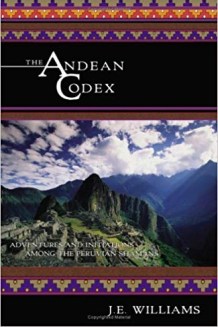
The Andean Codex
For the past three decades Dr Williams has journeyed among shamans in Peru, the mystical and spiritual centre of our times. The spiritual travelogue includes descriptions of the shamanic ceremonies he performed at sacred sites like Machu Picchu and Cuzco as well as his initiations using the mind - expanding psychedelic ayahuasca and the sacred coca plant
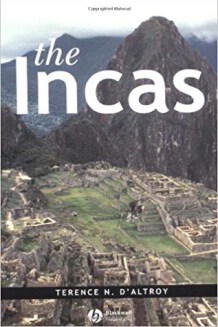
The Incas (Peoples of America)
An illustrated and accessible yet scholarly account of the Inca empire, for the general reader and undergraduate level students. Revising the earlier view that the Inca civilisation spanned only a single century, the world's leading specialist argues that the Inca state lasted two centuries or more. 80 maps and numerous colour photographs.
There have been many syntheses of the Inca culture of the Central Andes of South America, but this one, by the leader in Inca studies, surpasses them all. D'Altroy is recognised as an outstanding and well-published scholar on the provinces of the Inca Empire. I highly recommend this excellent synthesis of Inca studies ... for its comparative empire insights ... its smooth and lively narrative style and for the critical discussion of the abundant historical and archaeological sources on the Inca empire.
Journal of the Royal Anthropological Institute
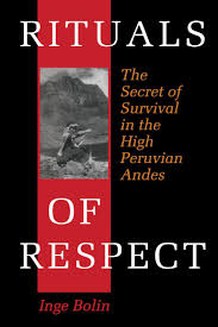
Rituals of Respect: The Secret of Survival in the High Peruvian Andes
Inge Bolin, an anthropologist, applies her scholary research in the Peruvian Andes to produce a text that is a contribution to cultural anthropology. Her respect for the peoples of Chillihuani, who live on the margins of human habitation in the high Andes, and her enthusiasm for learning are reflected in her writing style.
Combining an academic as well as a personal approach to writing is difficult; Bolin has succeeded in both spheres.
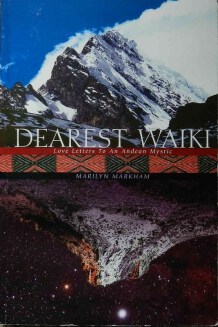
Dearest Waiki: Love Letters to an Andean Mystic
Dearest Waiki, a collection of letters and stories is an intimate account of one woman’s spiritual journey. Markham's message is sometimes delightful, sometimes heartbreaking, and always uplifting. Underscored by deeply personal visions and dreams, Dearest Waiki creates an awareness of the many spiritual lessons that surround each of us, each and every moment.
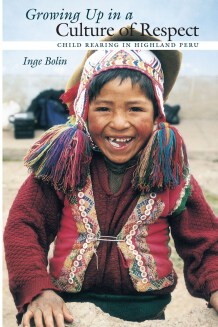
Growing Up in a Culture of Respect: Child Rearing in Highland Peru
Far from the mainstream of society, the pastoral community of Chillihuani in the high Peruvian Andes rears children who are well-adjusted, creative, and curious. They exhibit superior social and cognitive skills and maintain an attitude of respect for all life as they progress smoothly from childhood to adulthood without a troubled adolescence.
Inge Bolin traces children's lives from birth to adulthood and finds truly amazing strategies of child rearing, as well as impressive ways of living that allow teenagers to enjoy the adolescent stage of their lives while contributing significantly to the welfare of their families and the community.

Secrets of the Ancient Incas: A Modern Approach to Ancient Ritual and Practice
In his 20s, Michael Langevin travelled to Peru. During the visit he hiked through the land of Peru, visited the sacred sites and fell in love with the people and was drawn to the magic of the land.
From that moment he decided that he needed to incorporate the spirituality of Peru into his life so that he could take it with him no matter where he travelled. This book is an account of the author's personal journey and an introduction to the secret teachings and ancient traditions of the Incas
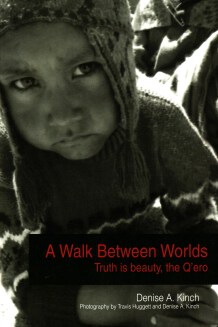
A Walk Between Worlds, Truth Is Beauty, the Q'ero
Explore the cultural traditions of the Q’ero Mountain people from their perspective. They have lived in remote elevations in the Andes Mountains since pre-Inca times. This isolation from the modern world has created a powerful community, honoring the value of each individual as an integral part of the whole.
They are a living example of ‘being’ the balance between Heaven and Earth. Their Elder and Leader Don Manuel Quispe speaks through the voice of author Denise Kinch to offer us insight into their community, family and spirituality.
His aim was to clear up misconceptions about his people before he passed from this world. Manuel crossed over in Dec of 2004 and asked Denise to fulfill this quest. This is the story of the master weavers, and how they have woven their relationship with the universe into the fabric of their being, in harmony with all their relations.
